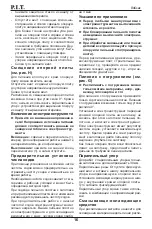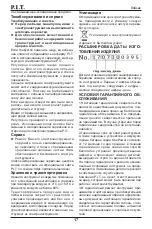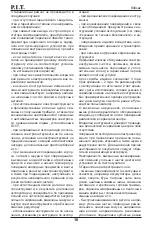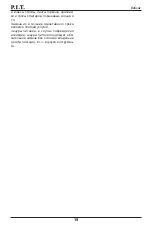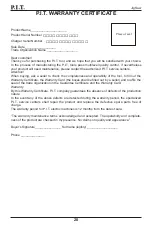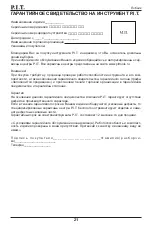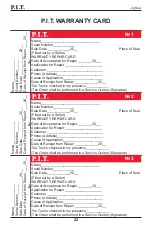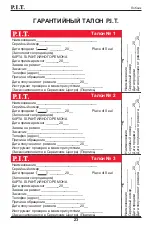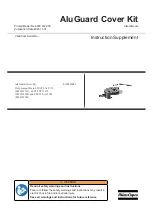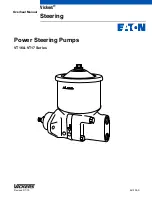
Jig Saw
8
um.
During prolonged periods of use at a low
stroke rate, the power tool may heat up sig-
nifi cantly. Remove the saw blade and let the
power tool run at the maximum stroke rate for
around three minutes to cool down.
Working Advice
► Pull the plug out of the socket before
carrying out any work on the power
tool.
► Switch the power tool off immediately if
the saw blade becomes blocked.
► When machining small or thin work-
pieces, always use a stable base or saw
table.
Before sawing into wood, chipboard, building
materials, etc., check for and remove any for-
eign objects such as nails, screws, etc.
Plunge cutting (see fi gure G)
► Plunge cuts may only be applied to
soft materials, such as wood, gypsum
board, etc.
For plunge cutting, use only short saw blades.
Plunge cutting is possible only with a mitre
angle of 0°.
Place the power tool so that the front edge of
the base plate rests on the workpiece, with-
out the saw blade touching the workpiece,
and switch it on. On power tools with stroke
rate control, select the maximum stroke rate.
Press the power tool fi rmly against the work-
piece and allow the saw blade to plunge slow-
ly into the workpiece.
As soon as the base plate rests fully on the
workpiece, continue sawing along the re-
quired cutting line.
Parallel guide
When working with the parallel guide, the
workpiece must be no more than 30 mm thick.
Parallel cuts: Loosen the locking screw and
slide the scale on the parallel guide through
the guide in the base plate. Adjust the desired
cutting width as a scale value on the inside
edge of the base plate. Retighten the locking
screw.
The parallel guide can also be used in combi-
nation with the guide rail.
Coolant/lubricant
As the material heats up along the cutting line
when cutting metal, you should apply coolant
or lubricant.
Maintenance and Service
Maintenance and Cleaning
► Pull the plug out of the socket before
carrying out any work on the power
tool.
► To ensure safe and effi cient operation,
always keep the power tool and the
ventilation slots clean.
In order to avoid safety hazards, if the power
supply cord needs to be replaced, this must
be done by P. I. T. or by an after-sales service
centre that is authorised to repair P.I.T. power
tools.
Clean the saw blade receptacle regularly. For
this, remove the saw blade from the power
tool and lightly tap out the power tool on a lev-
el surface.
If the power tool becomes very dirty, this can
lead to serious faults. For this reason, do not
cut materials which generate large quantities
of dust from below or overhead.
► In extreme conditions, always use a
dust extractor if possible.
Blow out venti-
lation slots frequently and install a residual
current device (RCD) upstream. When ma-
chining metals, conductive dust can settle
inside the power tool, which can aff ect its
protective insulation.
If the dust outlet is clogged, turn off the power
tool and remove dust and swarf.
Lubricate the idler roller with a drop of oil from
time to time.
Check the guide roller regularly. The worn
roller must be replaced by an authorized
P.I.T.power tool workshop.
Service
►
Repairing your power tool commission
only qualifi ed personnel and only with the
use of original spare parts. This ensures
the safety of the power tool.
The list of authorized service centers can be
viewed on the offi cial website of P.I.T. by the
link: https://pittools.ru/servises/
Storage and transportation
Store the instrument in closed rooms with
natural ventilation in a package at an air
temperature from 0 ° C to + 50 ° C and an air
humidity of no more than 80%.
Products can be transported by any type of
closed transport in the manufacturer’s pack-
aging or without it, while preserving the prod-
uct from mechanical damage, atmospheric
precipitation. Remove the exchange tool from
the power tool before transporting it.

















